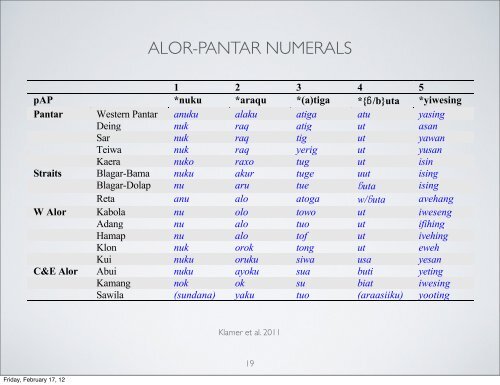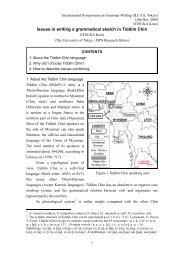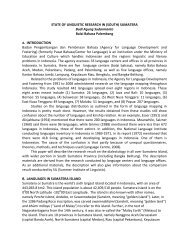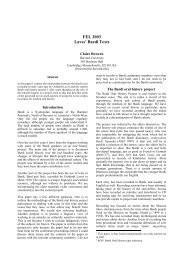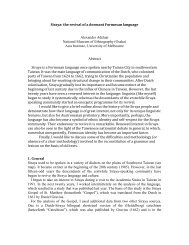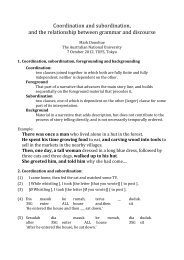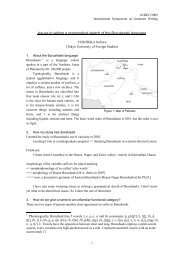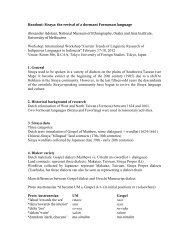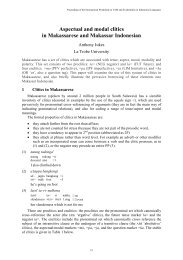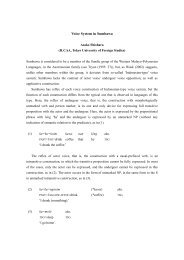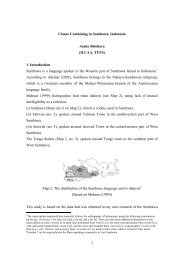Handout
Handout
Handout
You also want an ePaper? Increase the reach of your titles
YUMPU automatically turns print PDFs into web optimized ePapers that Google loves.
Table 1 presents an overview with the reconstructions to proto-Alor-Pantar (pAP). The<br />
PAP numerals ‘one’ to ‘five’ have been retained in most of its decedents. Only Sawila has<br />
innovated numerals in this range (non-cognate forms are bracketed).<br />
ALOR-PANTAR NUMERALS<br />
Table 1: AP numerals ‘one’ to ‘five’<br />
1 2 3 4 5<br />
pAP *nuku *araqu *(a)tiga *{/b}uta *yiwesing<br />
Pantar Western Pantar anuku alaku atiga atu yasing<br />
Deing nuk raq atig ut asan<br />
Sar nuk raq tig ut yawan<br />
Teiwa nuk raq yerig ut yusan<br />
Kaera nuko raxo tug ut isin<br />
Straits Blagar-Bama nuku akur tuge uut ising<br />
Blagar-Dolap nu aru tue uta ising<br />
Reta anu alo atoga w/uta avehang<br />
W Alor Kabola nu olo towo ut iweseng<br />
Adang nu alo tuo ut ifihing<br />
Hamap nu alo tof ut ivehing<br />
Klon nuk orok tong ut eweh<br />
Kui nuku oruku siwa usa yesan<br />
C&E Alor Abui nuku ayoku sua buti yeting<br />
Kamang nok ok su biat iwesing<br />
Sawila (sundana) yaku tuo (araasiiku) yooting<br />
The correspondences in the numerals are for the most part regular, but there are a few<br />
Klamer et al. 2011<br />
developments in individual languages that are note-worthy:<br />
A non-etymological initial /a/ is present on Western Pantar ‘one’ and ‘four’ and Reta<br />
‘one’. This development is apparently due to 19analogy with the numerals ‘two’ and possibly<br />
‘three’. Such analogical adjustments in numeral forms are cross-linguistically very<br />
Friday, February 17, 12


